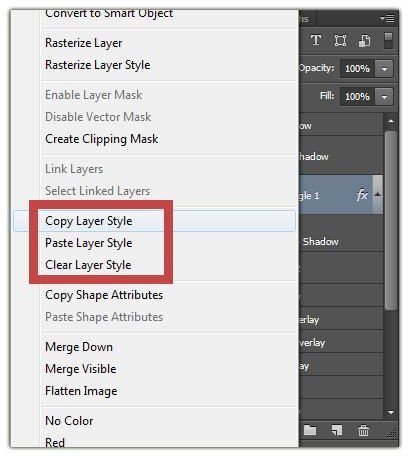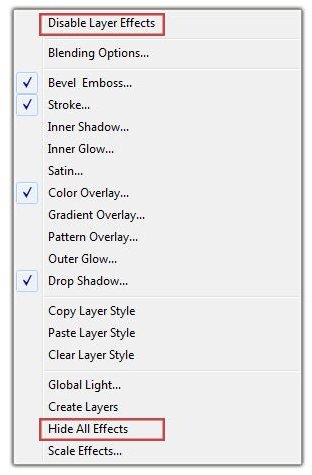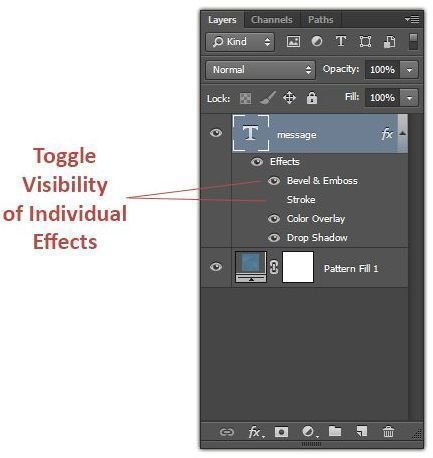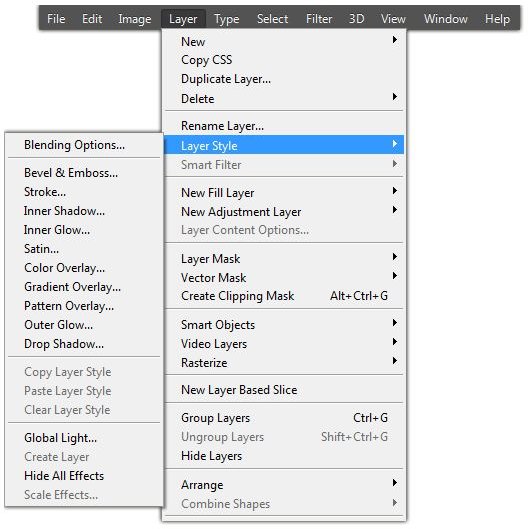Introduction to Layer Styles in Photoshop CS6
A Quick Look at Different Layer Styles
There are 10 different effects designated as layer styles in Photoshop CS6. Each one is fully customizable, but also has default settings so you can quickly and easily apply a style to a layer. To make application even easier, you can also redefine the default setting to something that is more in line with your own personal preferences.
The image above gives a general idea of what each layer style does. Wondering why there are 11 style examples shown instead of 10? Well, bevel and emboss effects are included within a single style with multiple presets, and we wanted to show a couple of those presets in our overview.
In addition to being able to customize each individual style, you can combine multiple styles together to create some pretty amazing effects. If you come up with a combination you particularly like, you can save it as a preset to use again in other projects. We’ll discuss how to do that in a minute, but first we’ll take a look at accessing and using the Layer Style dialog box.
Accessing Layer Styles
The controls for all 10 layer styles are housed together in the Layer Style dialog box. This allows you to create style combinations much more efficiently.
There are multiple ways to access this dialog box. Here are some of the most common methods.
Method 1: Double-click on the layer you want to apply a style to.
Method 2: Click on the “fx” icon at the bottom of the Layers panel.
Method 3: Right-click on the layer and select Blending Options.
Method 4: From the Layer menu on Photoshop’s main tool bar, hover over Layer Style and select the style you want to apply. This method is shown in the screenshot to the right.
The Layer Style Dialog Box
Once you perform the actions described in any of the four methods from the previous section, the Layer Style dialog box (shown above) will appear. Here, you can select the styles you want to apply to your layer from the list on the left. You can then click on each style and modify its default settings if you wish – or you can choose another preset for that style if multiple ones are available.
Check the box next to Preview to see the changes applied to your Photoshop doc as you make them – this is an extremely helpful tool for tweaking your effects. However, if you are experiencing memory issues and application lag on your computer, you may want to turn the Preview option off.
If you come up with a particular combination of settings that you like – either for a single style or for a group of them – you can save that combo by clicking on the New Style button and giving it a name. You can then access those same settings later on by clicking on Styles from the list on the right.
You can also change your layer blending options in this dialog box. When saving a style, you can choose whether or not you want to include these blending options as part of your new preset.
Other Tools for Managing Layer Styles
The ability to save new styles and apply them to other layers is certainly nice, but it can be a little tiresome to rely on that method alone when you want to experiment with a lot of different style options for your project. Plus, you may not want to save certain styles permanently – you may just want them around for the single Photoshop document you’re currently working on.
Fortunately, there are several other style-related features you can use.

1. Copy, Paste, and Clear Layer Styles – Suppose you just found the perfect combination of styles on one layer and you want to apply that same combo on other layers in your project.
Instead of saving that combo as a new style, you can just copy your style settings from one layer to another.
Right-click on the layer that includes the styles you want to duplicate, and choose Copy Layer Style. Then, right-click on layer you want to apply those settings to, and choose Paste Layer Style.
Also, if you want to get rid of any styles you’ve applied to a layer and start all over from scratch, you can right-click on that layer and choose Clear Layer Style.

2. Disable or Hide All Effects – Want a quick reminder of what your project looked like before you added a bunch of styles? You can toggle the visibility of all effects for an individual layer or for all layers at once with just a single click.
Right-click anywhere over the listing of a layer’s effects. Several options will appear, including Disable Layer Effects and Hide All Effects. The first option will hide any styles applied to that single layer, while Hide All Effects hides the styles from all layers in your project.
When you’re ready to toggle the visibility back on, just right-click over the Effects listing again. Select Enable Layer Effects or Show All Effects, depending on whether you initially chose to just hide the effects on a single layer or on all layers.

3. Toggle Visibility of Individual Style Effects – Instead of hiding all of the effects on a layer, maybe you want to see how things would look if you just removed one or two style elements.
Similar to the way you can hide an entire layer, you can hide an individual style component by clicking on the “eye” symbol next to the style’s name.
When you’re ready to make that component visible again, just click in the same area and the “eye” symbol will reappear.
Now, it’s time to go and start experimenting – if you come up with any cool new style settings, let us know!
This post is part of the series: Working with Layers in Photoshop CS6
Are you new to Photoshop? Don’t be intimidated by layers. They can be easy to use and quite helpful for a multitude of projects. Follow this series to get on board quickly.
